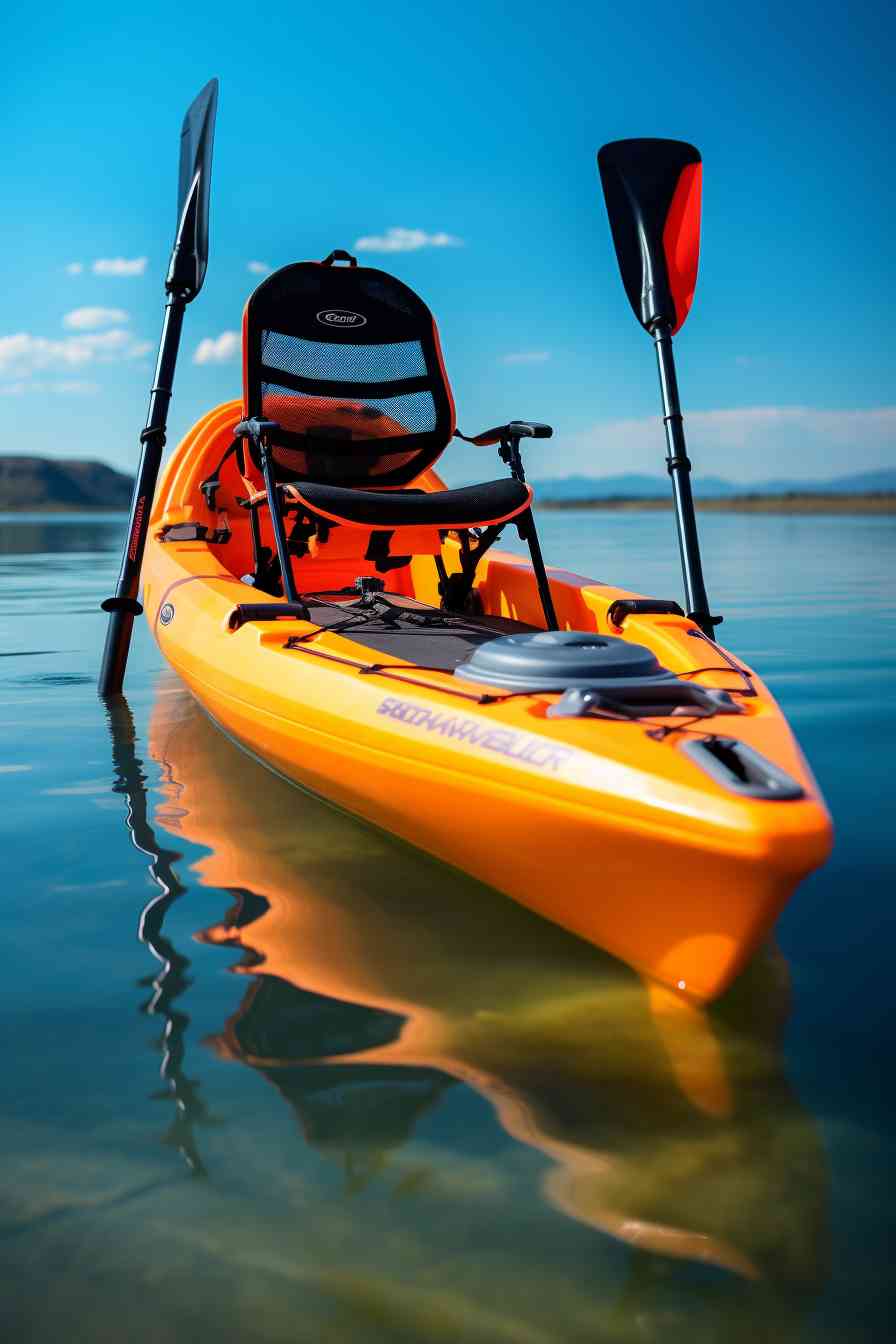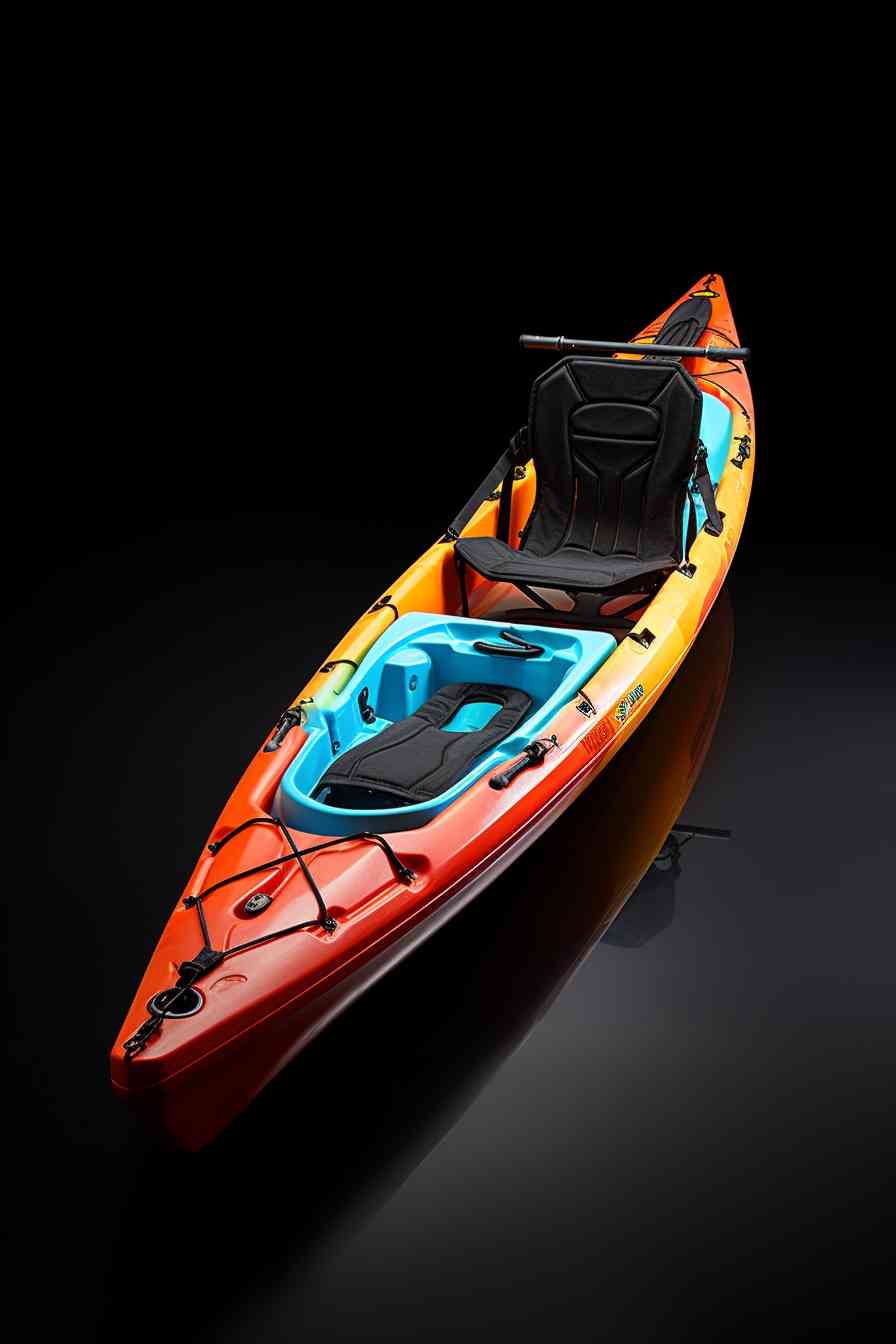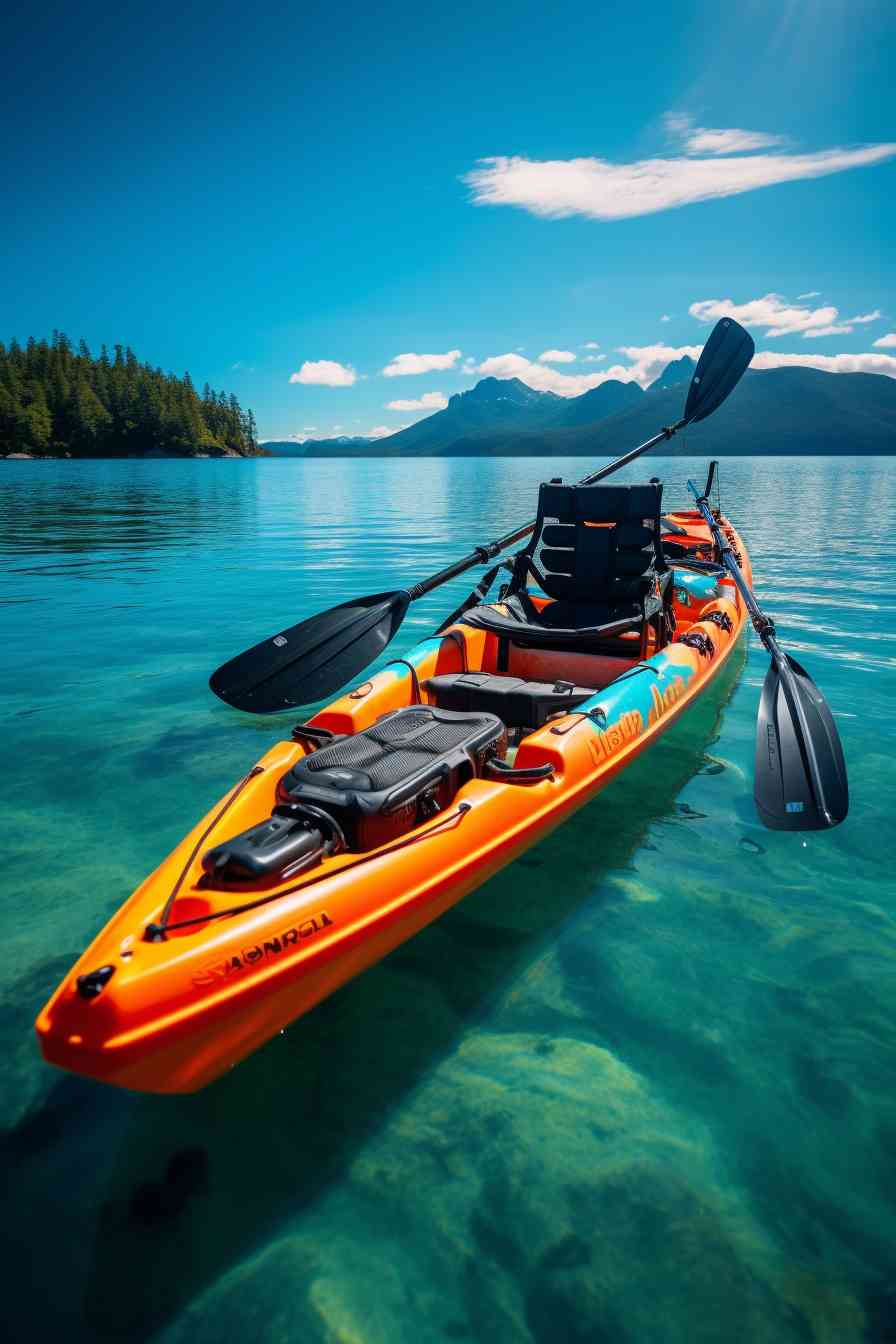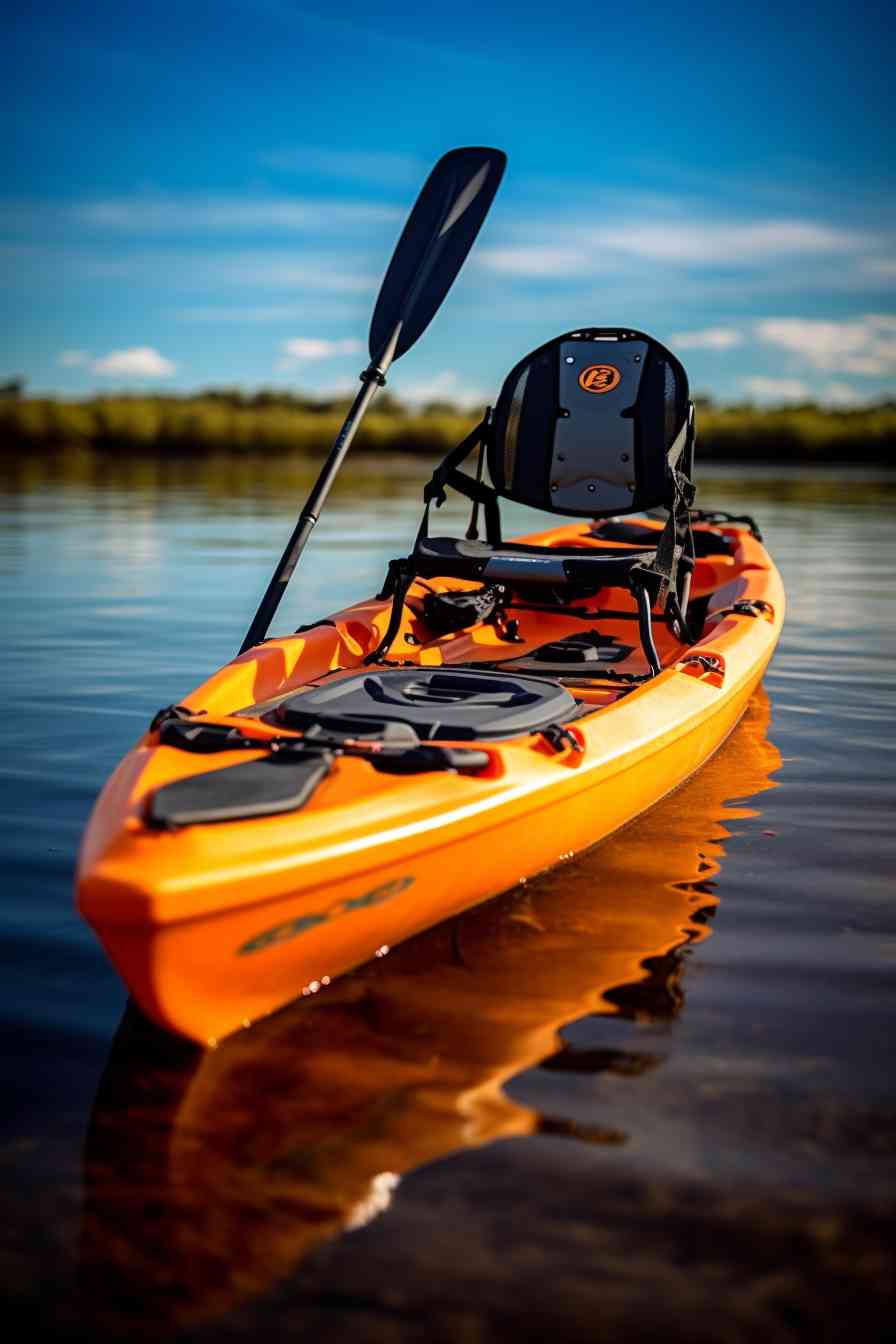Intro: Kayak Prices Kayak Cost

Well, hello there! If you’ve been spending some time on our blog, I bet you’re interested in kayaking. Or maybe you’re just curious about kayak prices. Well, you’re in luck because we’re diving into that today!
Let’s try to break down the cost of buying a kayak. After all, having a kayak of your own can open up a world of adventure, huh? It’s like being handed the keys to unexplored waterways and stunning natural scenes. But hold your horses, the big question stands, how much does a kayak cost?
Well, my friends, there’s no simple answer, I’m afraid. The cost can vary, and I mean really vary, based on a number of factors. Yeah, it’s kind of like buying a car. You can get a budget-conscious model that will get you from point A to B… or you can spring for the luxury model with all the bells and whistles.
What’s an average price then? A generally fair paddle down the financial rivers would set you back about $200 to $2,000. Yeah, I know, that’s quite a range, right? Remember though, this estimated price range includes basic models on the lower end and some high-end performance models or fishing kayaks on the loftier side.
In a nutshell, prices differ based on design, materials, brand, and additional features. You need to consider whether you want a sit-on-top or sit-in kayak, for instance. And don’t forget about the construction – inflatable, plastic, composite, oh my!
So, in the end, the cost of a kayak is going to depend quite a bit on what you’re looking for. Whatever you decide, remember to factor in potential additional costs like paddles, life vests (safety first, folks), and maybe even a roof rack for your car.
And there you have it, a brief exploration of kayak prices. But keep in mind, the cost of a kayak is more than just the price tag. It’s an investment into a new hobby, adventure, and lifestyle! Oh, and it’s worth every penny, believe me!
How Much Does A Kayak Cost?

Wow, are you thinking about buying a kayak? That’s fantastic! Paddling across a picturesque lake or down a rushing river is such an exhilarating feeling. But let’s get down to brass tacks. One question that might be lingering in your mind is “”
Well, the cost of a kayak can swing widely, just like a pendulum. Cheaper kayaks, which are usually inflatable or plastic, can be bought for somewhere between $100 and $300. They’re pretty decent for the occasional leisurely trip. However, if you’re an avid kayaker and you want something sturdier, you might be considering a hard-shell kayak. These usually run from $500 to $1,000. Of course, they tend to last longer and withstand harsher conditions than their inflatable counterparts. And trust me, nothing beats the feeling of gliding across the water in a hard-shell kayak.
I hate to be the bearer of bad news, but if you’re thinking about dipping your toes in the realm of high-end, specialized kayak models – hang on to your paddles! These can easily cost $1,000 to $3,000, or even more. They’re usually designed for specific activities like fishing, touring, or whitewater kayaking.
In the end, it all boils down to what you intend to use the kayak for and how often. So, before you start counting your pennies and deciding where to cut corners, think about what you really want from your kayaking adventures. Whatever your budget is, there’s likely a kayak out there that matches it! So, make sure to do some research and find the perfect kayak for your needs.
Remember, nothing worthwhile comes easy – or cheap, for that matter! But I guarantee, once you’re out there on the water, the price will feel like a drop in the ocean. After all, can you really put a price on freedom and adventure? I don’t think so. Happy kayaking!
How Much Is A Kayak Rental
Oh boy, renting a kayak can be a bit of a financial puzzle to solve, but I’m here to unravel the mystery for you. Let’s dive right in.
-
Hourly Rates: Kayak rentals are most commonly priced on an hourly basis. You’re looking at anywhere from $10 to $20 per hour, but it all hinges on the location and the type of kayak you’re after.
-
Daily Rates: If you’re planning to paddle the day away, then this option’s for you. The daily rates can range from $40 all the way up to $100.
-
Weekend Rates: Many places offer discounted rates for weekend rentals. So, you might end up paying something like $70 to $150 for that sweet two-day getaway.
-
Seasonal Rates: Want to spend the whole summer on the water? Great! But you better be ready to shell out quite a bit. Seasonal rentals can tickle the wallet to the tune of $500 or more.
-
Quality of Kayak: This is a biggie. A standard recreational kayak won’t cost you an arm and a leg, but if you’re dreaming of a high-end touring or sea kayak – well, let’s just say the price could make your eyes water.
-
Location: Where you are in the country can also factor into rental costs. Kayaking in a popular area? Expect to pay a premium price. But if you’re off the beaten path, you may just snag a bargain!
-
Extras: Life jackets, paddles, sprayskirts – oftentimes, these are all included in the price. But sometimes, you have to pay extra. And believe me, those “extras” can add up.
-
Damage fees: Accidents happen, sure, but any damage you cause to the kayak you rented will probably cost you. Most places expect you to return their equipment in the same condition that you received it.
Well, that’s the long and short of kayak rental prices. I hope it helps you navigate the waters of budget planning for your next paddling adventure!
Is Kayaking A Cheap Hobby?

Well, let me tell you, asking if kayaking is a cheap hobby is a bit like asking “how long is a piece of string?” It truly depends on a bunch of things, you see.
First off, you’ve got the cost of the actual kayak itself. Now, you can skimp here and snag a budget-friendly model for a mere couple hundred bucks, but let’s be real – you usually get what you pay for in this world. A high-quality kayak? That could set you back a pretty penny, perhaps $1000 or more.
Then, don’t forget about all the other gear you’ll need. Paddles ain’t free, friend, and neither are life vests (safety first, ya know?). Now you might be thinking “well, I’ll just save a few bucks by not buying a specialty kayak carrier for my car”. Alright, if you’ve got a truck or a van you might be able to get away with that, but otherwise, trust me, it’s worth the investment.
Of course, we can’t forget the ongoing costs, like maintenance and any fees associated with your favorite kayaking spots. If you’re the adventurous type who yearns to explore new waters, there could be travel costs too!
So, is kayaking a cheap hobby? It can be if you’re savvy, but there’s also the potential for it to be quite a costly venture. It depends on how you go about it, really. It’s a blast, though, I guarantee you! Just bear in mind that any hobby can become quite the investment if you’re serious about it. That’s okay, though, right? After all, you can’t put a price on joy.
What Is A Good Kayak For Beginners?

Well, if you’re new to the world of kayaking – welcome! It’s a thrilling sport – feeling that rush as you paddle through waves or calm waters, the world unfolding in front of you, it’s truly an experience. But, getting started can be a bit overwhelming, especially when trying to choose your first kayak.
Now, let’s talk about some good beginner kayaks. First, the Intex Challenger K1 Kayak stands out due to its affordable price and ease of use. Easy to inflate and deflate, this inflatable kayak is perfect for those who are new to the sport and perhaps aren’t sure about investing too much money just yet. The downside, though, is that it’s not the most durable.
Next up is the Sun Dolphin Aruba 10-Foot Sit-in Kayak. It’s a bit pricier than the Intex, but, it’s still affordable and offers a more traditional kayaking experience in terms of style and feel. It’s a compact and lightweight option that’s kind on the bank balance.
Lastly, an absolute beginner might consider the Lifetime Youth 6 Feet Wave Kayak. It’s designed for kids, but it’s an excellent option for beginners of any age, offering great stability and easy handling. If price’s a factor, rest assured, it won’t break the bank.
Remember, the right kayak for you depends on your needs, preferences, and budget. So, I’d say, take your precious time to explore and think before you invest. After all, you’re about to embark on a new and exciting journey!
What Is The Average Kayak?
Well, allow me to dive right into it! An average kayak, you see, isn’t just about a price tag, it’s about what you’re getting for your hard-earned cash. Kayaks can range in price significantly – we’re talking anywhere from a couple hundred bucks up to a few thousand, depending on a multitude of factors.
Think about it firstly from a material perspective: plastic or composite. Plastic kayaks, generally speaking, come with a smaller price tag. They’re resilient, great for beginners, and can typically set you back anywhere from $250 to $750. Now, should you be a more seasoned paddler or someone keen on speed and performance, a composite kayak – made from lightweight materials such as fiberglass or carbon fiber – might be the right pick for you. But – hold onto your paddle – these can range from roughly $1,000 to $4,000!
Features and design also play their part in the pricing game. Inflatable kayaks, for instance, are at the lower end of the spectrum, usually around $100-$700. Tandem (or two-person) kayaks? Those run higher, usually starting around $600 and can go up to about $900 or more.
And of course, let’s not forget about specialty kayaks! Fishing kayaks, for example, packed with extra bells and whistles like rod holders and extra seating, can start around $500 and shoot all the way up to $3,000.
So really, it all comes down to your needs, wants, and (naturally) budget. But remember, quality matters, so don’t be quick to settle for a bargain-basement option. After all, you wouldn’t want to be up the creek without a paddle – or worse, in a subpar kayak!
Final Verdict
Alright, so we’ve reached the part of the conversation where I talk about the final verdict on kayak prices. Whew! I gotta say, this is a pretty complex issue. Thinking about the cost of kayaks reminded me of that age old saying, “you get what you pay for”. When it comes to kayaks, you really do have to shell out a bit more if you want something top-tier or long-lasting.
I mean, to sum it all up, when you’re in the market for a kayak, the price will generally range from $250 to an astronomical $4000 ! Quite the range, isn’t it? But hey, it’s not all doom and gloom. I think it’s worth mentioning that you can find a really decent starter kayak for around $500. Not too shabby if you’re just dipping your toes into the sport, right?
Of course, if you’re more experienced and you’re looking for something a bit more…how should I put this…premium, expect to cough up upwards of $1500. And that’s being conservative.
It’s also worth noting that you need to factor in the cost of maintenance and the necessary gear. Oh man, let’s not even get started on that. It’s a veritable Pandora’s box! But to be fair, who said hobbies were cheap, eh?
So, in conclusion, the price of a kayak will fluctuate wildly depending on what you’re looking for. But remember, my friend, whether you’re a beginner just wading in, or a seasoned pro going for gold, always make sure to budget appropriately and make a sensible decision.
Frequently Asked Questions
1. How much does a new kayak cost on average?
Oh, well, it really depends, you see. A new kayak can range from $200 to over $4,000. This significant range is due to variables like the type of kayak, its size, material, and brand. Nonetheless, a decent recreational kayak usually costs around $300 to $700.
2. What factors can affect the cost of a kayak?
High five to this question! Several factors can influence kayak prices, including design, material, construction quality, brand value, type—whether it’s a recreational, touring, inflatable, or fishing kayak—and features such as seats, storage, and foot braces.
3. Is it cheaper to build a kayak yourself?
Hmm, interesting thought. In most cases, building a kayak yourself can be less expensive, with costs usually falling between $100 to $500. However, you need to consider the amount of time, effort, and skills required to build a kayak from scratch.
4. Can I get a quality kayak on a budget?
Absolutely, you bet! If you do your research, you can find good-quality, affordable kayaks. Many brands offer models that are both reasonable and reliable. Look for seasonal sales, discounts, and second-hand options to catch a good deal.
5. Are used kayaks worth the buy?
Well, if you’re on the look-out for a bargain, buying a used kayak can be a great choice. The cost often ranges from $100 to $1,000 depending on the condition and model. Just ensure you thoroughly check it out for any damage or repair signs before investing.
6. Which type of kayak is the most cost-effective?
You’re hitting the bullseye! Recreational kayaks are generally the most cost-effective. They’re perfect for beginners and casual paddlers owing to their stability and ease of use.
7. Why are some kayaks so expensive?
Aha, good question! High-end kayaks are typically made with advanced materials like carbon fiber or kevlar. They’re often lighter, more durable, and provide better performance. The design and build quality, brand reputation, and extra features also add up to the cost.
8. Can you suggest some affordable kayak brands?
Indeed, I can! Brands like Lifetime, Sun Dolphin, and Perception Kayaks offer reasonable prices and good quality. Researching and comparing prices can help you find the best deal.
9. How much does a fishing kayak cost?
Fishing kayaks can be a bit pricier due to additional features like rod holders, fish finders, and storage compartments. They typically range between $500 to $2,000. Is there anything else you’re curious about?
10. What’s the price difference between a sit-on-top and a sit-inside kayak?
Nice catch! On average, both styles can range between $200 to $1,000. However, sit-on-top kayaks may be slightly more expensive due to their wider design and extra features. The exact price will depend on the brand, material, and additional features.

